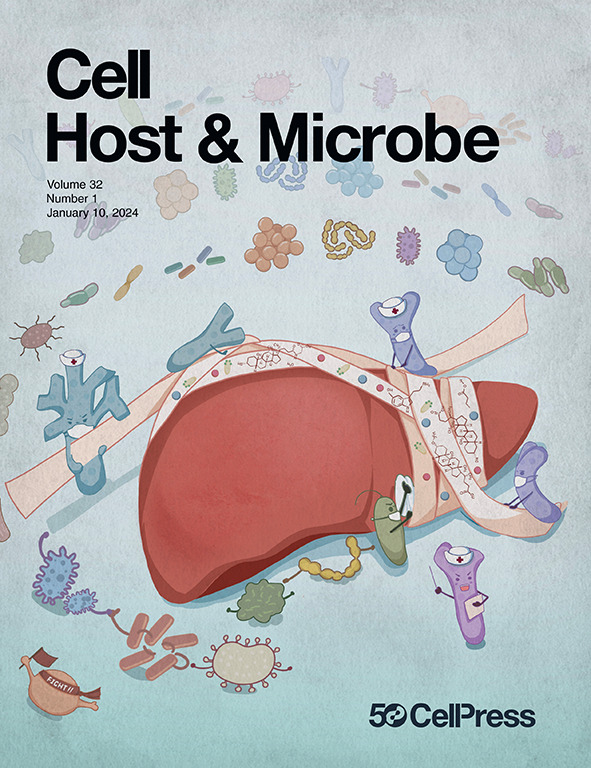Immune profiling in subclinical secondary dengue-infected cases reveals adaptive immune signatures correlated to protection from severe dengue
IF 18.7
1区 医学
Q1 MICROBIOLOGY
引用次数: 0
Abstract
Development of strategies to prevent severe dengue has been challenging, partly by our incomplete understanding of a protective immune response after dengue virus (DENV) infection. To define adaptive immune signatures associated with protection from hospitalized dengue, we performed in-depth single-cell immunoprofiling and quantified DENV-specific T cells in subclinical or hospitalized dengue-infected children. Individuals with subclinical infection exhibit clonally expanded CD4亚临床继发性登革热感染病例的免疫分析揭示了与严重登革热保护相关的适应性免疫特征
制定预防重症登革热的战略一直具有挑战性,部分原因是我们对登革热病毒(DENV)感染后的保护性免疫反应了解不完全。为了确定与住院登革热保护相关的适应性免疫特征,我们在亚临床或住院登革热感染儿童中进行了深入的单细胞免疫分析和定量denv特异性T细胞。亚临床感染个体表现出CD4+ TEMRA细胞的克隆扩增,denv特异性CD4+ T细胞的频率增加,并表现出Treg功能增加的基因表达特征。在所有T细胞亚群中,亚临床病例上调I型IFN反应基因特征。相比之下,来自住院患者的扩增CD8+ EM细胞表达更多的抑制标记物和更少的细胞毒性蛋白。此外,住院登革热的特点是高频率和克隆扩增的表达免疫球蛋白G (Ig) g1的质母细胞。这些发现确定了保护的候选相关因素,并支持T细胞定向干预登革热疾病的基本原理。
本文章由计算机程序翻译,如有差异,请以英文原文为准。
求助全文
约1分钟内获得全文
求助全文
来源期刊

Cell host & microbe
生物-微生物学
CiteScore
45.10
自引率
1.70%
发文量
201
审稿时长
4-8 weeks
期刊介绍:
Cell Host & Microbe is a scientific journal that was launched in March 2007. The journal aims to provide a platform for scientists to exchange ideas and concepts related to the study of microbes and their interaction with host organisms at a molecular, cellular, and immune level. It publishes novel findings on a wide range of microorganisms including bacteria, fungi, parasites, and viruses. The journal focuses on the interface between the microbe and its host, whether the host is a vertebrate, invertebrate, or plant, and whether the microbe is pathogenic, non-pathogenic, or commensal. The integrated study of microbes and their interactions with each other, their host, and the cellular environment they inhabit is a unifying theme of the journal. The published work in Cell Host & Microbe is expected to be of exceptional significance within its field and also of interest to researchers in other areas. In addition to primary research articles, the journal features expert analysis, commentary, and reviews on current topics of interest in the field.
 求助内容:
求助内容: 应助结果提醒方式:
应助结果提醒方式:


